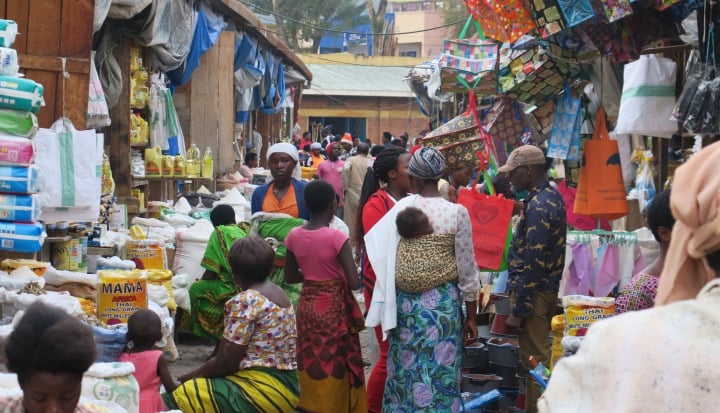Part I: What have we learned so far on doing business at the Base of the Pyramid?
It’s been 20 years since the concept of the Bottom/Base of the Pyramid (BoP) was first popularized by C.K Prahalad. Since then, the field has come a long way, almost all the top business schools offer BoP classes and countless articles have been written about the field and the 5 trillion-dollar market that can be captured by finding profitable, sustainable, and scalable ways to serve the approximately 3 billion people that live on less than $2.5 per day.
Yet despite several case studies and a clear set of best practices that has emerged, I am yet to find any comprehensive research on what the outcomes of these practices are 20 years down the line. I have been working in this field for over a decade, yet when I recently began asking these questions, I find it’s not always clear how many of the businesses I learned about when I began this journey have survived or successfully scaled 10+ years down the line.
Despite a plethora of new social impact/BoP ventures continuously emerging to solve the multitude of development challenges, it’s hard to find clear data on which of these businesses have stood the test of time, or for those that have survived, how successful have they been in both creating financial returns for their shareholders and impact for the communities they serve.
Acumen Fund recently published a report, Failing Forward and I applaud them and the SELCO Foundation’s Impact Failure conference that inspired this for embracing failure and sharing their learnings. However, after reading the report I still had many questions on the efficacy of impact investment. For example, in the report, they share that 25% of Acumen’s investments from 2001 to 2019 have been ‘home runs’ with both impact and financial success and another 13% that have achieved financial success but without ‘meaningful impact’. They define financial success as a return on invested capital of more than 1x. This means that if we look at Acumen’s total portfolio over the period only 38% have generated a return that covers their initial investments. This begs the question if this was the best use of these funds. (Let’s say they invested $100 million in total that means that $62 million did not generate a financial return to cover even the initial investment). It’s also unclear what their policy is for these unsuccessful investments. How do they exit/wind down such ventures without creating havoc in the communities they serve?
and the SELCO Foundation’s Impact Failure conference that inspired this for embracing failure and sharing their learnings. However, after reading the report I still had many questions on the efficacy of impact investment. For example, in the report, they share that 25% of Acumen’s investments from 2001 to 2019 have been ‘home runs’ with both impact and financial success and another 13% that have achieved financial success but without ‘meaningful impact’. They define financial success as a return on invested capital of more than 1x. This means that if we look at Acumen’s total portfolio over the period only 38% have generated a return that covers their initial investments. This begs the question if this was the best use of these funds. (Let’s say they invested $100 million in total that means that $62 million did not generate a financial return to cover even the initial investment). It’s also unclear what their policy is for these unsuccessful investments. How do they exit/wind down such ventures without creating havoc in the communities they serve?
In the report they compare their returns to a regular VC where a 25% success rate would be extremely impressive. However, such a VC would also expect a return from these successes of around 10X or even more, justifying the total investment in the portfolio. However, even Acumen’s 25% of ‘home runs’ are unlikely to have generated such large returns. Therefore, we need to ask whether the overall investment is justified or the best use of funds for serving low-income populations?
To be clear, I think Acumen Fund has done an incredible job of pioneering the field of Impact Investment and ‘Patient Capital’. However, as a practitioner and strong advocate for business as a source of good and a powerful tool for fighting poverty, I think that these are important questions that we need to be asking ourselves to make sure that we in the impact- driven community are being true to our intended goals.
Of course, risks are a necessary part of this process and this makes failure at times inevitable. However, as Harvard Business School professor, Amy Edmondson writes in her recent book, The Right Kind of Wrong we need to make sure that these are ‘intelligent failures’ – where we learn from them, create the conditions that limit the damage (which I think is particularly important especially in low-income population settings) and build on these learnings to create new knowledge.
I also think it’s important to always keep in mind that we are operating in a world of limited resources, especially when looking at businesses serving the world’s poorest people. Every ‘failure’ has a cost which at the very minimum is the opportunity costs of money meant to help the poor, that could have been better spent elsewhere. At worst, this can be a much larger cost of doing damage to the ecosystems and people involved. Unfortunately reality does not lend itself to a scientific experiment where we simply compare different outcomes of investing in an impact business vs a non-profit vs simply giving the money to the beneficiaries.
However, I also don’t think this gives us a license to not ask these questions. In his recent book, Best Things First, Bjorn Lomborg puts forward his scientific based recommendations for the ‘12 most efficient solutions for the world’s poorest’ where governments and philanthropies/aid agencies should focus their spending. He argues that these are proven interventions that have massive ‘bang for the buck’ in terms of poverty alleviation and this is where the world should be prioritizing its resources. Perhaps it’s time we start to ask similar questions for the business/impact community – such as where, to what companies or in what sectors can we create the most sustainable impact and scale for our investment dollars?
In my next article I will share some of my questions in this respect, and I welcome any comments or feedback from the Business Fights Poverty Community.










